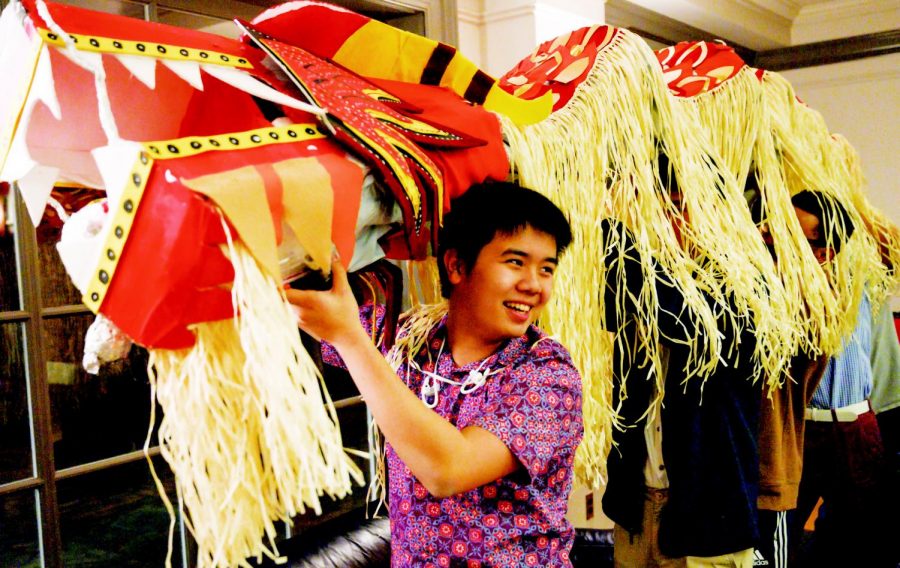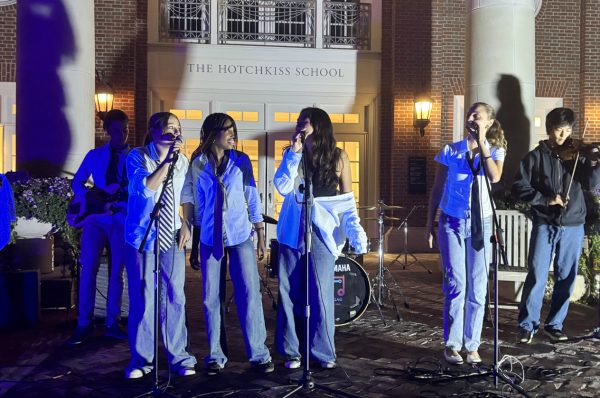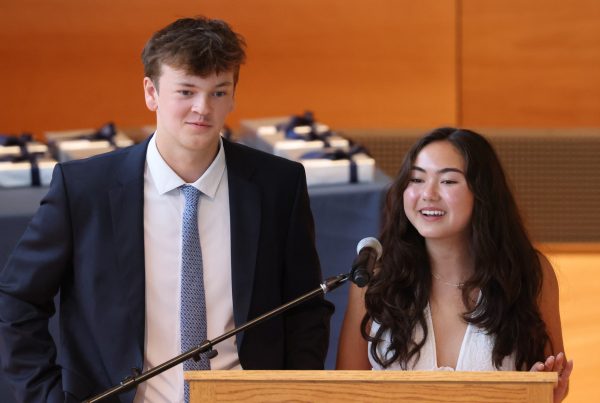Community Welcomes the Year of the Pig
YY Cher ’20 helps hold a red dragon decoration during the Lunar New Year celebration in the Student Center on Monday, February 4.
Sparklers and the aroma of traditional Asian foods greeted members of the community in the Student Center on February 4 for the Lunar New Year celebration. Flags and a poster displaying the words “Happy New Year” in Chinese, Vietnamese, and Korean decorated the Student Center. More than 50 parents hailing from Hong Kong, Shanghai, Singapore, and Seoul visited, bringing popular games and traditional clothing to add to the holiday cheer.
In Asian cultures that use lunar calendars, which base their days, months, and years on the cycles of the moon, the beginning of the new year is marked by the first new moon of the first month of the year. Fireworks, dancing, and red decorations to represent happiness and good fortune, are common elements of New Year celebrations across Asia.
Family unity is also a major theme of the holiday, as relatives return home and honor their ancestors with communal feasts. People commonly wear red, as many at the celebration did, to bring them good fortune. Students at the event also wore traditional clothing from their cultures, such as the Chinese qipao and the Korean hanbok – consisting of jeogori, a blouse, and chima, a skirt, or paji, a type of baggy pants. The festivities helped create a feeling of home by bringing together students, faculty, and parents to celebrate annual traditions. Yihan Ding ’22 said, “[It was] a really nice bonding experience for people from different grades and different cultures.”
Over the past few years, the school’s festivities have evolved. Previously, the Lunar New Year was celebrated with a dining hall spread organized by the Chinese Club. Cici Bu ’20 said, “This year and last year, [our] parents have come over to make the food, so it’s a lot better than before, because we’re celebrating with our [family].” Also, this year’s event celebrates all the Asian cultures that observe the Lunar New Year, unlike past events, which focused primarily on the Chinese New Year. Ms. Nora Yasumura, director of student clubs and affinity groups, said, “I really appreciated how this year we intentionally recognized and highlighted a wide range of cultures that celebrate the Lunar New Year. What a special gift that so many parents, students, faculty, and staff were able to come together to celebrate this special event on our campus.”
Foods served at the event included dumplings, spring rolls, bulgogi (Korean barbecue), japchae (Korean stir fry), and nian gao (Chinese rice cake). This food was prepared and served by parents who traveled to the school to assist with the celebration. Ms. Jean Chang, P’18, ’21, who played a major role in planning the gathering, said, “We were overwhelmed by the parents’ support. Over 50 families supported the Lunar New Year celebration.”
The Asian Culture Club and the Chinese Club, along with parents and faculty advisors, set up activities, including calligraphy and popular Asian children’s games. Students at the calligraphy station learned to write the phrase xin nian kuai le (“happy new year”) and zhu nian da ji (“year of the pig”) in Chinese. Games played included jegichagi, a Korean game played with jegi, which are similar to shuttlecocks, and gonggi, a Korean children’s game played with small pebbles.
Though many students at school must spend the Lunar New Year away from family, the celebration helped students connect, honor their ethnic backgrounds, and share a piece of home with their peers. Dajung Lim ’19, a Senior from Korea, said, “It’s always hard [not to] be with my family on Lunar New Year, but this year’s celebration really put a big smile on my face. The decorations, food, energy, and warmth truly made me feel at home.”





